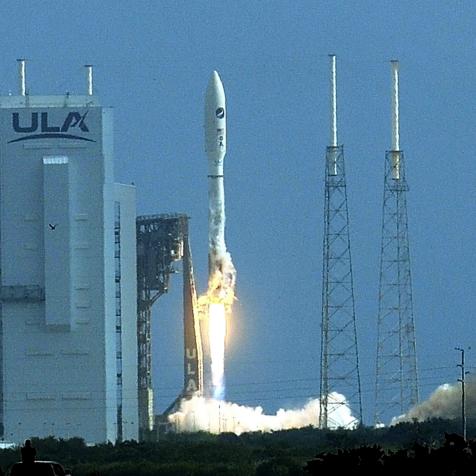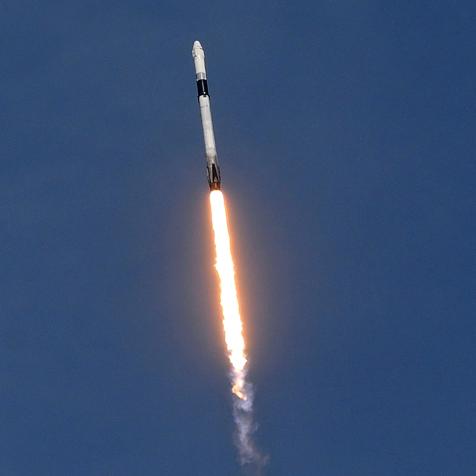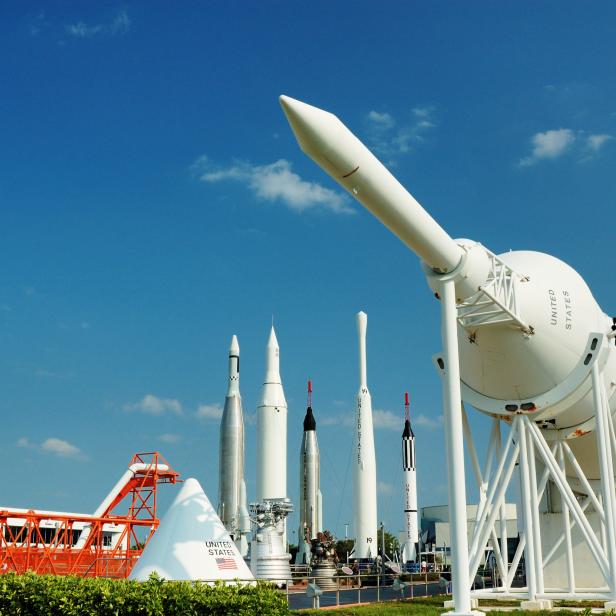
Purdue9394
Space Launch LIVE Discussion Guide

Tune into Discovery Channel and use this companion discussion guide to spark meaningful conversation about the next era of space flight.
Stream SPACE LAUNCH LIVE on discovery+.
On May 27th, humans will go into space (again). But what’s different about this upcoming NASA launch is that it will be the first time since 2011 that astronauts have left the surface of the Earth from the surface of the United States. And what’s more, they’ll be strapped on top of a rocket designed and built by the private company SpaceX.
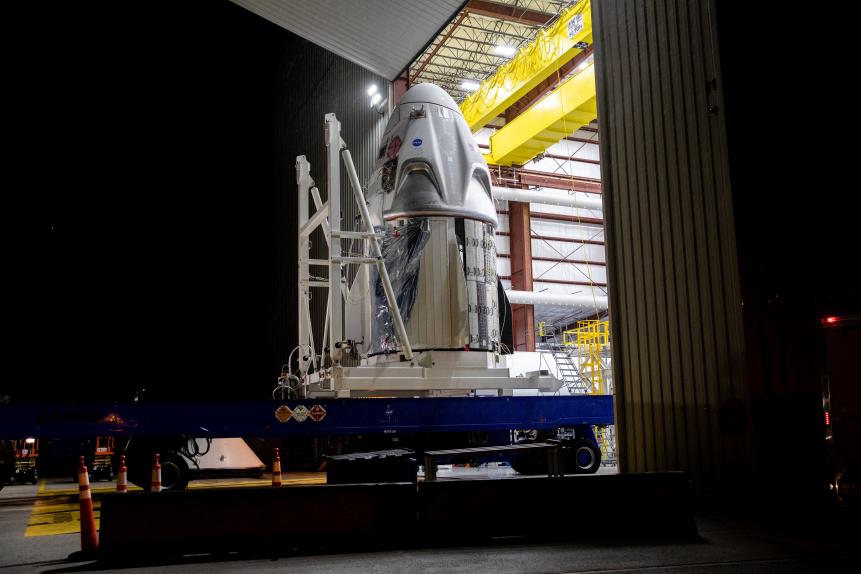
NASA/Kim Shiflett
The SpaceX Crew Dragon spacecraft arrives at Launch Complex 39A at NASA’s Kennedy Space Center in Florida, transported from the company’s processing facility at Cape Canaveral Air Force Station on Friday, May 15, 2020, in preparation for the Demo-2 flight test with NASA astronauts Robert Behnken and Douglas Hurley to the International Space Station for NASA’s Commercial Crew Program.
Reusable Rockets are Awesome
- Why haven’t we developed reusable rockets before?
- Are there limitations to reusable rockets?
- What makes a rocket “reusable” anyway?
TAKEAWAY: Reusable rockets require extensive automated control, something no human is capable of. By far, the most expensive part of the rocket is the engine, which is typically ditched in the ocean after every launch. By landing and retrieving the rocket after the main launch, the cost for access to space drastically lowers.
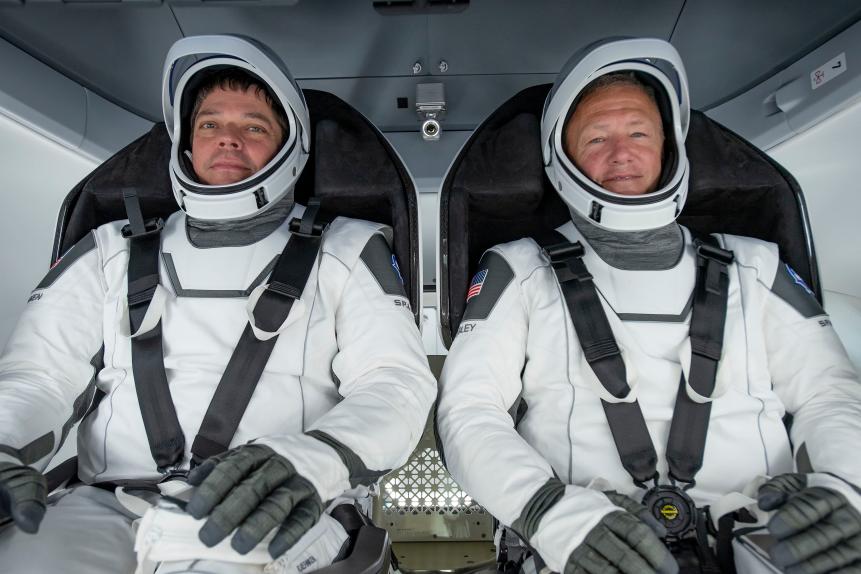
SpaceX
On Monday, March 30, 2020 at a SpaceX processing facility on Cape Canaveral Air Force Station in Florida, SpaceX successfully completed a fully integrated test of critical crew flight hardware ahead of Crew Dragon’s second demonstration mission to the International Space Station for NASA's Commercial Crew Program; the first flight test with astronauts onboard the spacecraft. NASA astronauts Bob Behnken and Doug Hurley participated in the test, which included flight suit leak checks, spacecraft sound verification, display panel and cargo bin inspections, seat hardware rotations, and more.
Human Spaceflight is Awesome
- Why has it been so long since astronauts launched from the United States?
- Can’t robots do all this better?
- What will be the next goal in human spaceflight?
TAKEAWAY: The Space Shuttle was America’s only vehicle for sending astronauts into space, and budget cuts and delays delayed its replacement to decades after it was needed. While we make extensive use of robotic missions, no probe can match the speed, intelligence, independence, and mobility of a real human exploring another world.
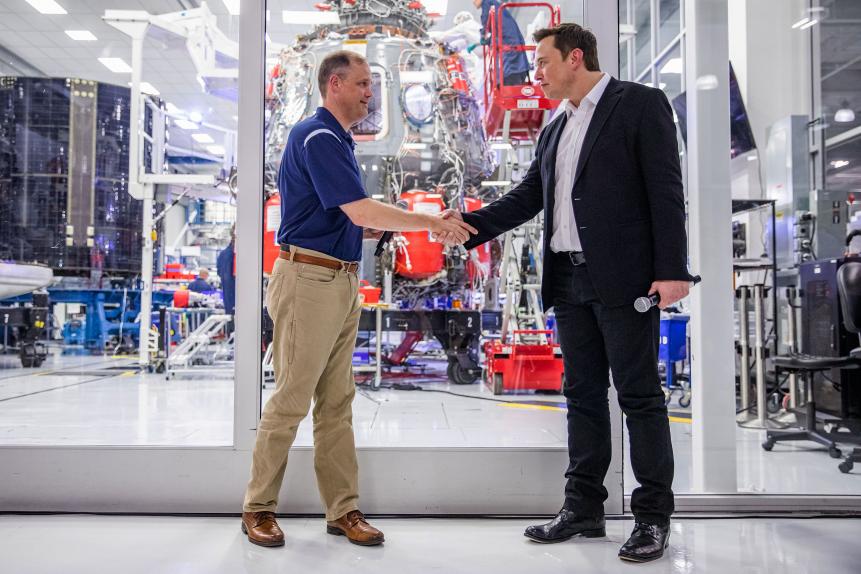
PHILIP PACHECO
NASA Administrator Jim Bridenstine (L) and SpaceX founder Elon Musk shake hands at the conclusion of a press conference announcing new developments of the Crew Dragon reusable spacecraft, at SpaceX headquarters in Hawthorne, California on October 10, 2019.
Public/private Partnerships are Awesome
- Why are private companies so interested in space?
- Do private companies offer any advantages over government organizations?
- Is there a future in space for more private companies?
TAKEAWAY: Some private companies envision a future business opportunity in spaceflight, while others are purely in it for the fun (if you had a spare few billion dollars you just might do it too). Ironically, private companies can maintain long-term missions better than government agencies, since they are not beholden to congressional or administrative changeover.

NurPhoto
A SpaceX Falcon 9 rocket is seen in this time exposure from Cocoa Beach, Florida as it launches the company's third Starlink mission on January 6, 2020 from Cape Canaveral Air Force Station, in Cape Canaveral, Florida. The rocket is carrying 60 Starlink satellites as part of a planned constellation of thousands of satellites designed to provide internet services around the world.
Low Earth Orbit
- How are we taking advantage of space already?
- What will cheap access to space bring us in the future?
- Will I ever go to space?
TAKEAWAY: Communication satellites are a part of our everyday lives (in fact, you may have used one to read this), as well as putting the “S” in the GPS system. Companies like SpaceX are deploying thousands of satellites to provide broadband internet for…the whole world, while other companies like Bigelow Aerospace are investigating how to build orbiting hotels. Who knows what the future might bring when launching into space is as cheap as driving across town?

MARK GARLICK/SCIENCE PHOTO LIBRARY
Exploring the Solar System
- Did Mars ever host life?
- What’s going on with the ocean worlds in the outer solar system?
- How did the Earth get here?
TAKEAWAY: We know so little about our home system. We know that billions of years ago Mars looked like Earth, with big oceans and gorgeous blue skies. Did life find a home there before all that water dried up? And the moons of the giant planets host more liquid water than the Earth does – but it’s locked under miles of rock-hard ice. What’s up with that? We don’t know, and only continued exploration can help us find the answers.

















